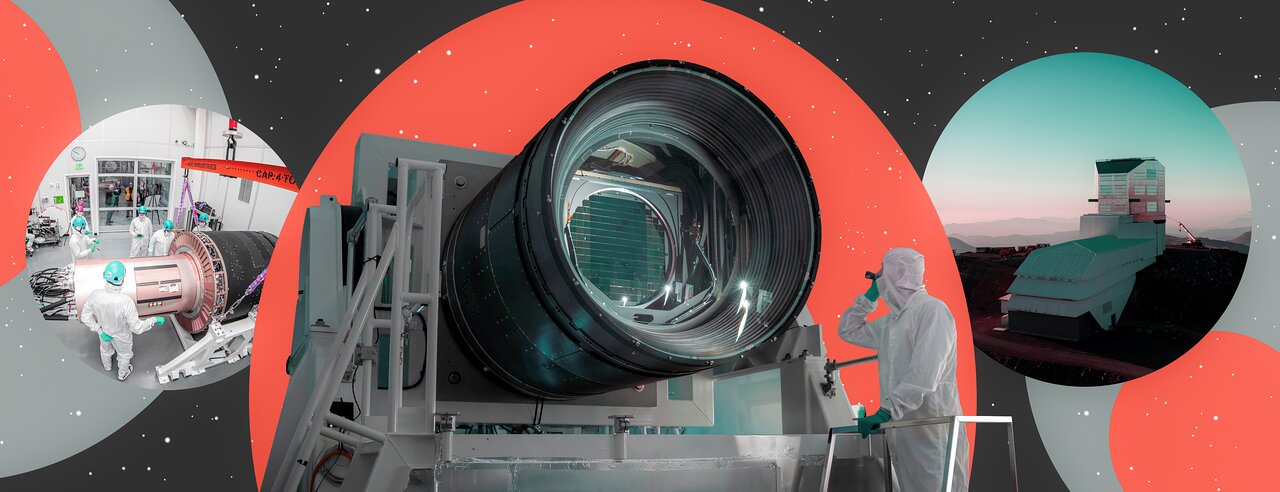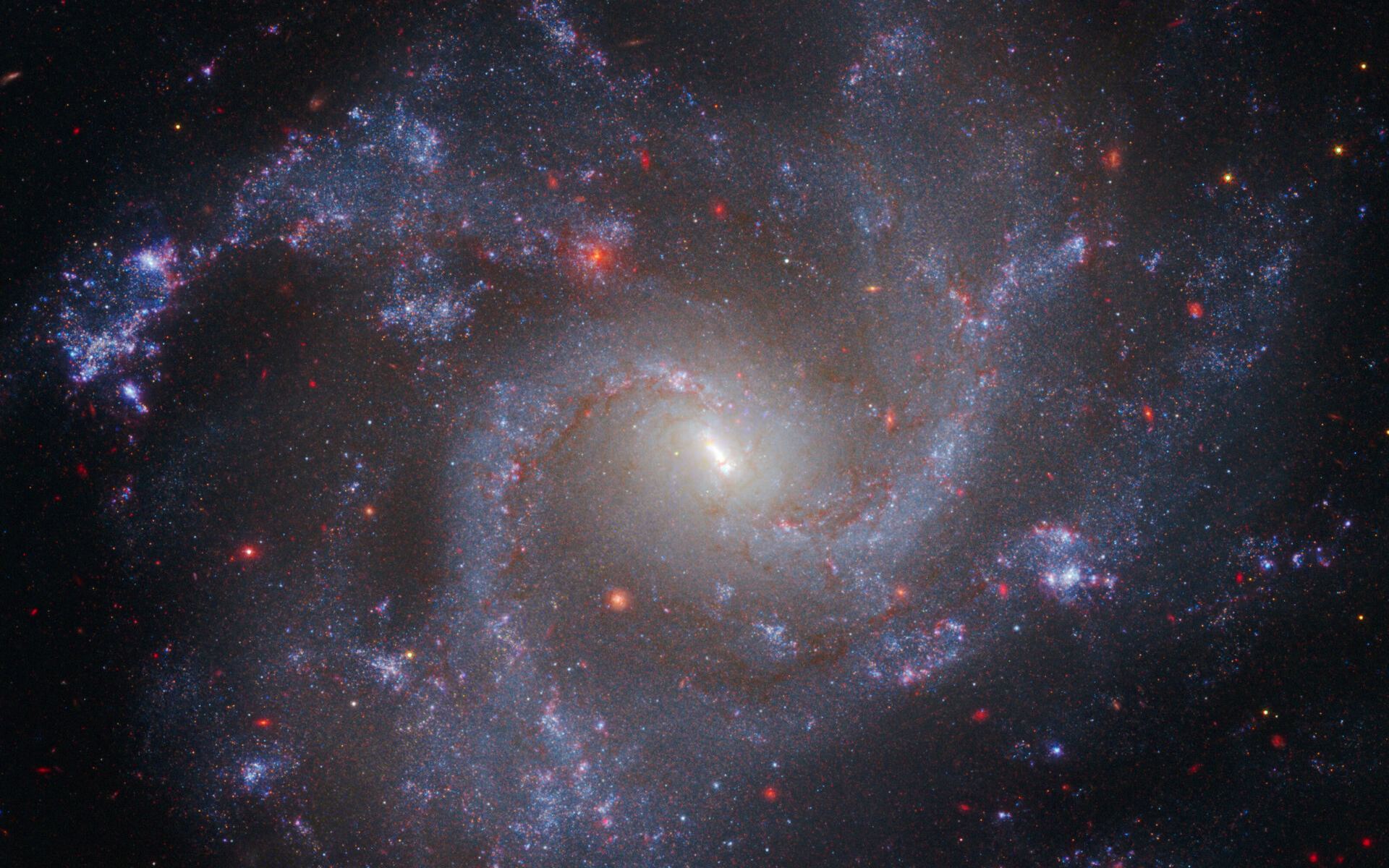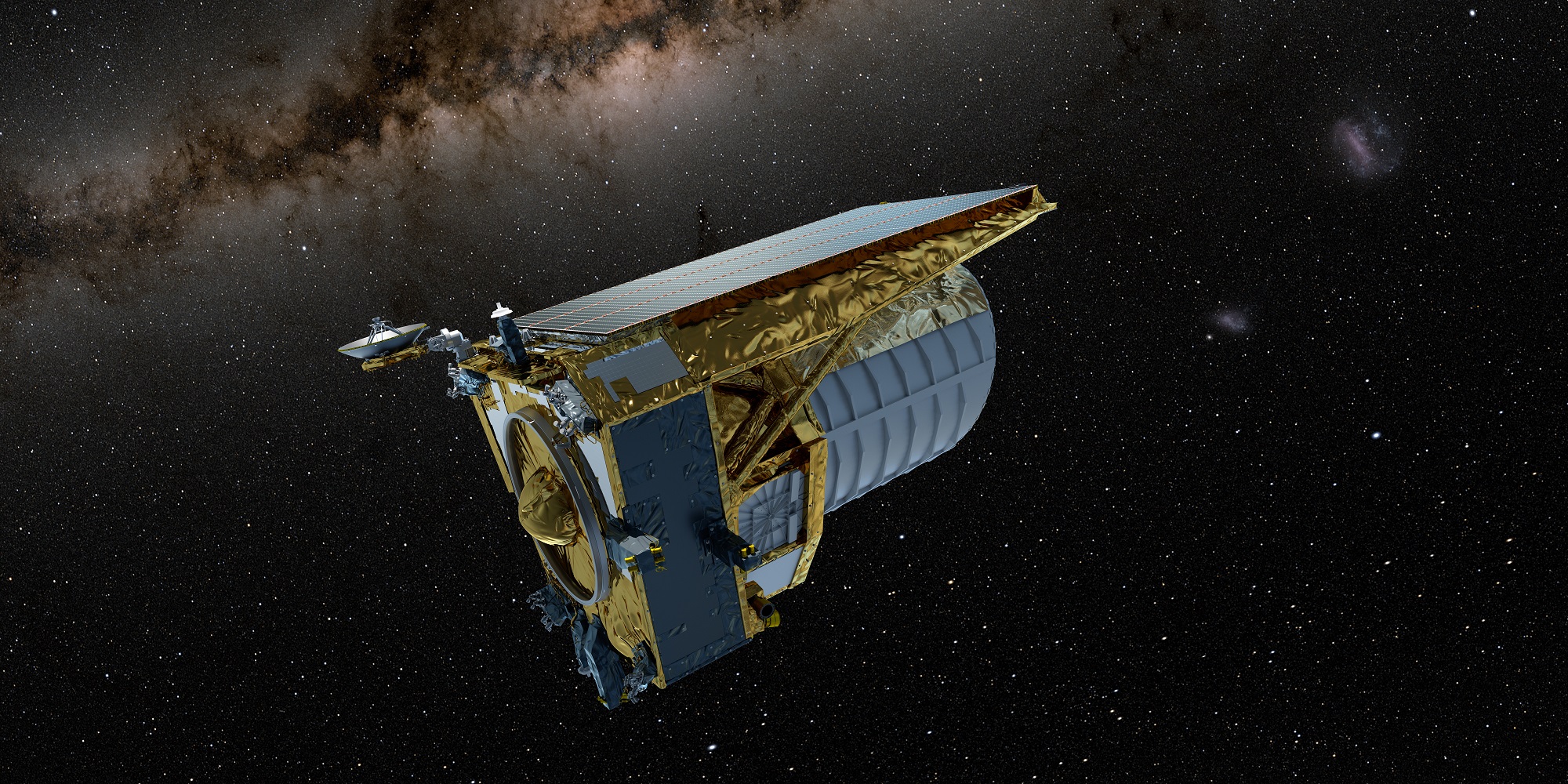Dark energy is central to our modern understanding of cosmology. In the standard model, dark energy is what drives the expansion of the Universe. In general relativity, it’s described by a cosmological constant, making dark energy part of the structure of space and time. But as we’ve gathered more observational evidence, there are a few problems with our model. For one, the rate of cosmic expansion we observe depends on the observational method we use, known as the Hubble tension problem. For another, while we assume dark energy is uniform throughout the cosmos, there are some hints suggesting that might not be true. Now a new study argues we’ve got the whole thing wrong. Dark energy, the authors argue, doesn’t exist.
Continue reading “New Study of Supernovae Data Suggests That Dark Energy is an Illusion”Einstein Predicted How Gravity Should Work at the Largest Scales. And He Was Right

When Albert Einstein introduced his theory of general relativity in 1915, it changed the way we viewed the Universe. His gravitational model showed how Newtonian gravity, which had dominated astronomy and physics for more than three centuries, was merely an approximation of a more subtle and elegant model. Einstein showed us that gravity is not a mere force but is rather the foundation of cosmic structure. Gravity, Einstein said, defined the structure of space and time itself.
Continue reading “Einstein Predicted How Gravity Should Work at the Largest Scales. And He Was Right”The Connection Between Black Holes and Dark Energy is Getting Stronger

The discovery of the accelerated expansion of the Universe has often been attributed to the force known as dark energy. An intriguing new theory was put forward last year to explain this mysterious force; black holes could be the cause of dark energy! The theory goes on to suggest as more black holes form in the Universe, the stronger the pressure from dark energy. A survey from the Dark Energy Spectroscopic Instrument (DESI) seems to support the theory. The data from the first year of operation shows the density of dark energy increases over time and seems to correlate with the number and mass of black holes!
Continue reading “The Connection Between Black Holes and Dark Energy is Getting Stronger”Check Out This Sneak Peek of the Euclid mission’s Cosmic Atlas

On July 1st, 2023 (Canada Day!), the ESA’s Euclid mission lifted off from Cape Canaveral, Florida, atop a SpaceX Falcon 9 rocket. As part of the ESA’s Cosmic Vision Programme, the purpose of this medium-class mission was to observe the “Dark Universe.” This will consist of observing billions of galaxies up to 10 billion light-years away to create the most extensive 3D map of the Universe ever created. This map will allow astronomers and cosmologists to trace the evolution of the cosmos, helping to resolve the mysteries of Dark Matter and Dark Energy.
The first images captured by Euclid were released by the ESA in November 2023 and May 2024, which provided a glimpse at their quality. On October 15th, 2024, the first piece of Euclid‘s great map of the Universe was revealed at the International Astronautical Congress (IAC) in Milan. This 208-gigapixel mosaic contains 260 observations made between March 25th and April 8th, 2024, and provides detailed imagery of millions of stars and galaxies. This mosaic accounts for just 1% of the wide survey that Euclid will cover over its six-year mission and provides a sneak peek at what the final map will look like.
Continue reading “Check Out This Sneak Peek of the Euclid mission’s Cosmic Atlas”A New Catalog Charts the Evolution of the Universe Over Time
An atlas doesn’t seem to be an essential item in cars these days but think about them and most people will think about distances. An atlas of the stars not only covers distances but must also take into account time too. The Andromeda galaxy for example is so far away that its light takes 2.5 million years to reach us. A team of researchers have now built a catalogue that contains information on millions of galaxies including their distance and looks back in time up to 10 billion years!
Continue reading “A New Catalog Charts the Evolution of the Universe Over Time”Estimating the Basic Settings of the Universe

The Standard Model describes how the Universe has evolved at large scale. There are six numbers that define the model and a team of researchers have used them to build simulations of the Universe. The results of these simulations were then fed to a machine learning algorithm to train it before it was set the task of estimating five of the cosmological constants, a task which it completed with incredible precision.
Continue reading “Estimating the Basic Settings of the Universe”The World's Largest Digital Camera is Complete. It Will Go Into the Vera Rubin Observatory

The Vera C. Rubin Observatory, formerly the Large Synoptic Survey Telescope (LSST), was formally proposed in 2001 to create an astronomical facility that could conduct deep-sky surveys using the latest technology. This includes a wide-field reflecting telescope with an 8.4-meter (~27.5-foot) primary mirror that relies on a novel three-mirror design (the Simonyi Survey Telescope) and a 3.2-megapixel Charge-Coupled Device (CCD) imaging camera (the LSST Camera). Once complete, Rubin will perform a 10-year survey of the southern sky known as the Legacy Survey of Space and Time (LSST).
While construction on the observatory itself did not begin until 2015, work began on the telescope’s digital cameras and primary mirror much sooner (in 2004 and 2007, respectively). After two decades of work, scientists and engineers at the Department of Energy’s (DOE) SLAC National Accelerator Laboratory and their collaborators announced the completion of the LSST Camera – the largest digital camera ever constructed. Once mounted on the Simonyi Survey Telescope, this camera will help researchers observe our Universe in unprecedented detail.
Continue reading “The World's Largest Digital Camera is Complete. It Will Go Into the Vera Rubin Observatory”Ice is Starting to Cloud Euclid's Optics
On July 1st, 2023, the European Space Agency (ESA) launched the Euclid Observatory, a mission that will spend the next six years investigating the composition and evolution of the Universe. In particular, Euclid will observe how the Universe has expanded over the past 10 billion years to test theories about Dark Energy. While fine-tuning and calibrating the telescope’s instruments in preparation for the mission’s first survey, the mission team noticed that a few layers of water ice formed on its mirrors after it entered the freezing cold of space.
While common, this is a problem for a highly sensitive mission like Euclid, which requires remarkable precision to investigate cosmic expansion. After months of research, the Euclid team tested a newly designed procedure to de-ice the mission’s optics. On March 20th, the ESA announced that the team’s de-icing approach worked (so far) and that Euclid’s vision has been restored. If the method proves successful, it will have validated the mission team’s plan to keep Euclid‘s optical system working for the rest of its mission.
Continue reading “Ice is Starting to Cloud Euclid's Optics”Red Giants Offer a New Way to Measure Distance in the Universe

For nearly three decades now, it’s been clear that the expansion of the Universe is speeding up. Some unknown quantity, dramatically dubbed ‘dark energy’, is pushing the Universe apart. But the rate at which the Universe’s expansion is increasing – called the Hubble Constant – hasn’t yet been nailed down to a single number.
Not for lack of trying.
Continue reading “Red Giants Offer a New Way to Measure Distance in the Universe”Webb Continues to Confirm That Universe is Behaving Strangely

Over a century ago, astronomers Edwin Hubble and Georges Lemaitre independently discovered that the Universe was expanding. Since then, scientists have attempted to measure the rate of expansion (known as the Hubble-Lemaitre Constant) to determine the origin, age, and ultimate fate of the Universe. This has proved very daunting, as ground-based telescopes yielded huge uncertainties, leading to age estimates of anywhere between 10 and 20 billion years! This disparity between these measurements, produced by different techniques, gave rise to what is known as the Hubble Tension.
It was hoped that the aptly named Hubble Space Telescope (launched in 1990) would resolve this tension by providing the deepest views of the Universe to date. After 34 years of continuous service, Hubble has managed to shrink the level of uncertainty but not eliminate it. This led some in the scientific community to suggest (as an Occam’s Razor solution) that Hubble‘s measurements were incorrect. But according to the latest data from the James Webb Space Telescope (JWST), Hubble’s successor, it appears that the venerable space telescope’s measurements were right all along.
Continue reading “Webb Continues to Confirm That Universe is Behaving Strangely”


